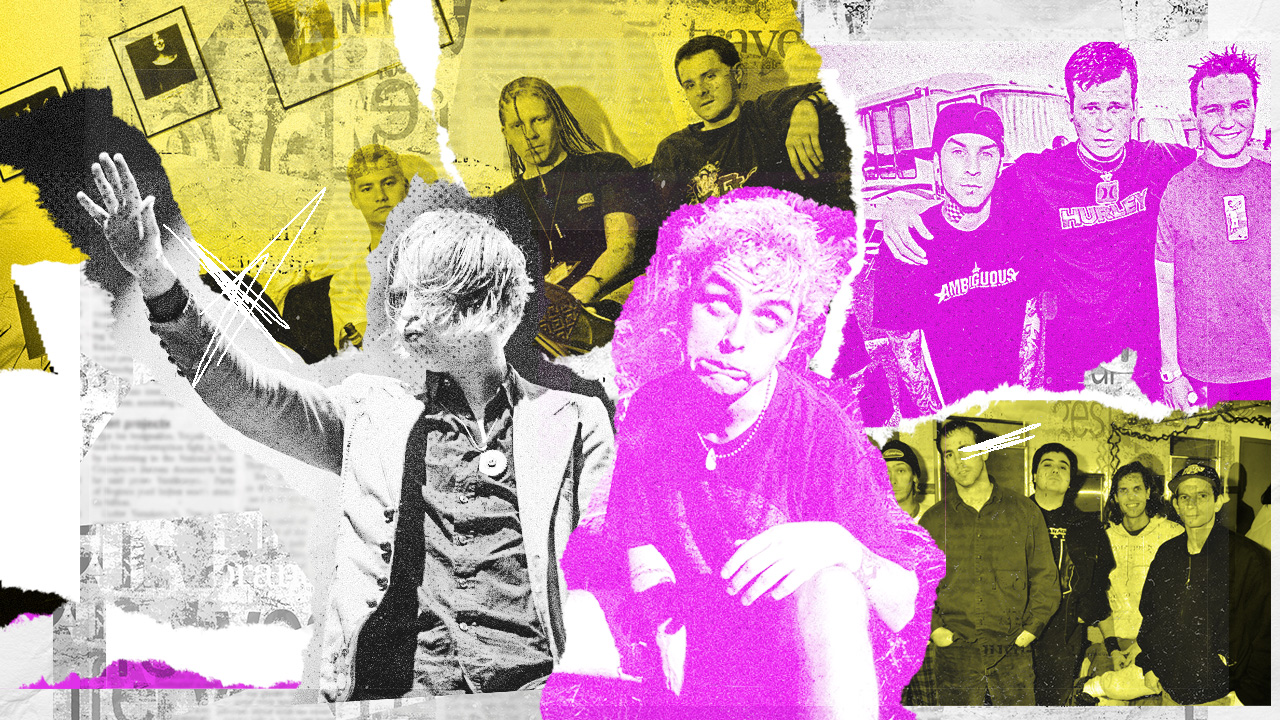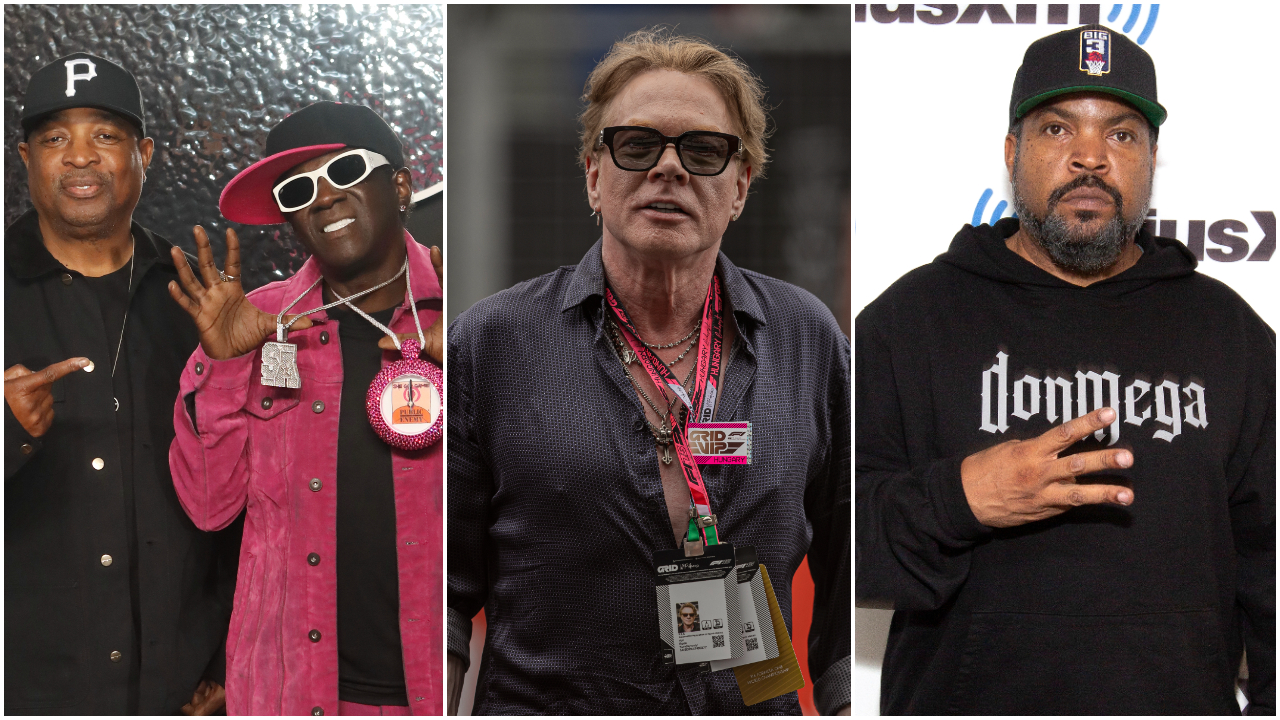A beginner's guide to 90s punk in 5 essential albums
A brief history of how punk broke into the mainstream (again), charted by the albums that defined the era

1991 was the year that punk broke... again. After a decade of brilliant underground releases in the 1980s, where punk rock morphed and evolved into a variety of new and exciting sounds, the mainstream once again woke up to the charms of the genre in the 90s. To many it was the era that introduced them to the sound of punk, to others it was the time where the music they loved jumped the shark. Whatever your opinion, you can’t deny it was a fascinating period. This is the story of how it all went down in 5 albums.

Bad Religion – Recipe for Hate (1993)
The definitive Bad Religion album? Nope. The best Bad Religion album? Certainly not. The most influential Bad Religion album? Not even close. So why is Recipe For Hate getting the nod here? Simply put, BR are the band most responsible for the blueprint of the punk rock sound that dominated the 90s. It was also a landmark moment for the genre, with Recipe For Hate being the first album released on major label Atlantic Records by the LA band, which made them the first high-profile punk band to jump to a major in the aftermath of Nirvana’s 1991 carpet-bombing of the music industry. It’s a very good record, and features the ever-popular American Jesus – with its guest spot from Eddie Vedder on backing vocals – but its inclusion here is really to highlight a crossroads moment for the genre. Suffer, Generator, Stranger Than Fiction and Against The Grain are arguably superior Bad Religion albums, but Recipe For Hate was proof that, after a decade of ignoring the scene, suddenly the mainstream were paying attention to punk rock again.
Green Day – Dookie (1994)
If Bad Religion shocked the punk scene by signing to a major, it was Green Day who took the mainstream's newfound appreciation of punk to a whole new generation of unsuspecting suburban mallrats. Dookie saw the Berkley trio receive snorts of derision from the Gilman Street/Maximum Rocknroll sect after they signed to Warner Music affiliate Reprise Records, but to most people the songs were just so inescapably brilliant they were impossible to deny. Basket Case and When I Come Around were perfect slacker anthems for impressionable, alternative-loving, MTV-viewing kids. Suddenly punk rock had a true, mainstream, breakthrough band, and, after the record peaked at an astonishing number 2 on the US Billboard Chart, Rancid, NOFX, Pennywise, Bouncing Souls and more soon followed in their wake. Dookie is the sound of punk breaking for the second time.
The Offspring – Smash (1994)
Of all the artists who followed in Green Day’s slipstream, none were more high-profile than The Offspring. The Orange County quartet didn’t have a great weight of expectation upon them after two decently ho-hum albums. Certainly, their label Epitaph had no idea what was about to happen when they submitted the first single from the band’s third album Smash to radio and MTV in early 1994, but Come Out And Play’s mix of punk pace, Teen Spirit riff and oddly catchy Eastern rhythm blew up and made The Offspring one of the hottest artists on the planet. The album was soon sitting at number 4 on the US Billboard Chart and went on to become the biggest selling independent label release of all time, a feat unlikely to ever be bettered. It’s fair to say that The Offspring not only released a brilliant crossover album, the snotty alt-punk of songs like Self Esteem, Genocide and Gotta Get Away proving perfect fodder for the kids who had bought Dookie, but also single-handedly turned Epitaph Records from tiny punk rock staple into one of the most beloved labels of all time. And releases on Epitaph by everyone from Parkway Drive, NOFX, Rancid, Bring Me The Horizon, Alkaline Trio, Architects, Every Time I Die and The Hives appear to back that fact up.
Refused – The Shape Of Punk To Come (1998)
People may argue whether, despite its name, The Shape Of Punk To Come is actually a punk album at all. Are Refused a hardcore band or are they a punk band? Feel free to have those arguments amongst yourselves, as, ultimately, it’s probably neither. 25 years after its release, it’s still pretty hard to pin down exactly what the Swedish band accomplished on their remarkable third album. Taking its name from Ornette Coleman’s 1959 album The Shape Of Jazz To Come, the record was peppered with electronic, rock and roll, jazz and post-hardcore musical influences, with political sloganeering and beat-poetry in its lyrics, and really is unlike anything before or since. At the time the album was either misunderstood or, worse, completely ignored, leading to Refused splitting soon after its release. But as the years went on and the ideas that Refused explored began to become more and more commonplace in the punk scene, the album slowly garnered the praise it deserved. One listen and you can hear where so many of the post-hardcore bands that broke big in the 2000s and beyond got many of their tricks from. It may seem that only Refused knew just how influential it would be at the time, but decades down the line its legacy is startlingly clear.
Blink-182 – Enema Of The State (1999)
Before Blink-182 came along, Green Day, Descendants, All, The Offspring, Pennywise and Lagwagon would all have been described as pop-punk. Some of those bands, as discussed already, were phenomenally successful. But even though they were appealing to a pop crowd, Green Day were still singing songs about idle masturbation and existential boredom, and The Offspring drew on gang warfare, emotionally manipulative relationships and road rage as lyrical inspiration. Blink prettied everything up, made it all a bit shinier and even poppier, wrote songs about teenage crushes and adolescent pranks and finally turned punk rock into the kind of thing that’d you’d happily take home to meet your parents – as long as your parents didn't mind jokes about sodomy. In the process they re-invented pop punk into the Sum 41, All Time Low, Fall Out Boy, Good Charlotte, Simple Plan style that we all know it as today. The band’s third studio album became their big breakthrough, selling a whopping 15 million copies, featured huge hits such as What’s My Age Again and All The Small Things, and has been cited as a gateway into punk by everyone from Architects' Sam Carter to Machine Gun Kelly. Some people hated it, but as evidence of the journey of the genre – which started the decade being completely ignored by the mainstream and ended it as the multi-platinum selling sound of the zeitgeist – Enema Of The State is impossible to ignore.
The latest news, features and interviews direct to your inbox, from the global home of alternative music.
